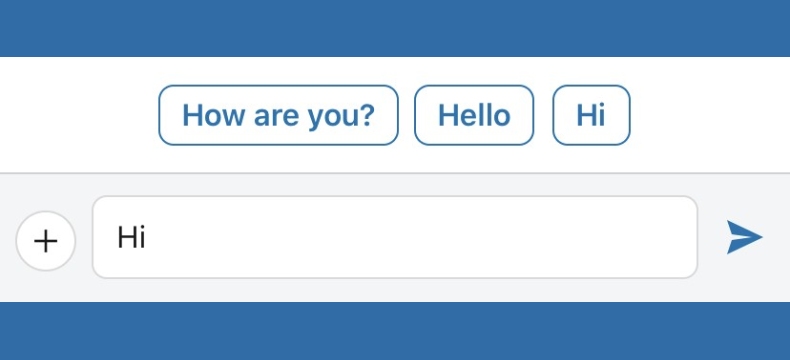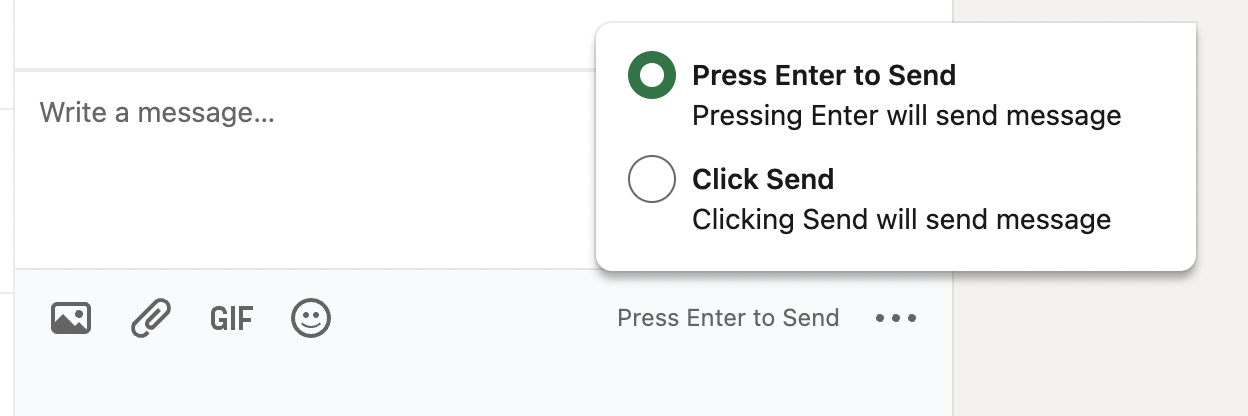
On average, I get about 50-60 direct messages on LinkedIn every month from both people I know (and already connected to), and from people I do not know (who may be using the LinkedIn premium account or may be part of a LinkedIn Group that I’m also part of).
I also get about 30-40 messages on WhatsApp and Facebook Messenger every month, mostly from people I do not know, but they figured out my phone number from someone else.
Of these, at least 20% of the messages start and stop with just a ‘Hi’, ‘Hi Karthik’, ‘Hello’, or ‘Hello Karthik’, plus a ‘How are you?’, particularly from people I don’t know.
That’s just it – no other message after that!!
If it was sent in the late evening and I see them in the morning, all I see is a ‘Hi. How are you?’ waiting for me! I have no idea what I’m supposed to do with it.
I tend to ignore such messages, but when some of these messages came from very senior folks (50+ in terms of age, having held very important positions in global MNCs), I wanted to go behind this approach. So I asked a couple of them about it (after addressing what it is they messaged me for, of course).
Even though a ‘Hi’ and ‘How are you?’ befuddled me, I really wanted to understand the reasons behind this approach.
One person told me that she was using the LinkedIn message option like how she’d talk in the real world – she meets me, says ‘Hi Karthik… how are you?’, and pauses for me to say something in return. Once I do, she then proceeds with the next part of the conversation. A conversation, after all, requires more than one participant… unless I’m in a philosophical or introspective mood and decide to have a conversation with myself, with my own mind, silently.
Another person who had messaged me just ‘Hello’ (and nothing else!) on WhatsApp told me he was waiting for me to read the message (double blue ticks!) so that he can proceed with the next part.
After hearing these reasons, I was able to better appreciate the other person’s perspective and not merely feel befuddled. Yes, I value my time a lot, but in most cases, the other person did not intend to send just a ‘Hi’. They had assumed something based on the real-world equivalents of conversational nuances.
Real-world conversations are synchronous, while online chats and messages (including email) are asynchronous. On a phone call, video call, or face-to-face meeting, we are with the other person at the same time and look at the conversation like a transaction – you say something, they say something, and so on. We make use of many nuances learned by mankind over many, many generations as our guide: a small pause, a longer pause, body language, facial expressions… everything tells us something and informs our own course of action in the conversation.
On a chat, everything goes out of the window immediately. No matter when you send your ‘Hi’, I will read it only when I can/want to, and only when I get to it. So we need to make up new rules, and these continue to be made and learned.
My expectation, or perspective, in an online chat conversation would be to come to the point in one message: Hi – this is who I am – this is why I am messaging you – would you be interested?
But this may be presumed to be too blunt and anti-social, particularly to a stranger, by someone who thinks of this as the virtual equivalent of a face-to-face meeting or a phone conversation. So, a better way would be to think of messaging too as an email. After all, we do not send just a ‘Hi’ in an email 🙂
However, the reason why people continue to send ‘Hi’ on messaging chats is perhaps they think chats are synchronous. To be sure, chats used to be synchronous before mobile phones made it not necessarily synchronous.
Remember the days of Yahoo Chat and ICQ? These were pre-smartphone, web-only chats that we used via computers that were stuck in one place. We even had the acronym BRB to indicate a pause in the chat conversation. BRB, or Be Right Back, was a very considerate acronym because we did not want the other person to wonder why there is a break in the chat or what happened to us (even as we simply went to the loo!). It was a polite, civil gesture even in an online chat.
And why has BRB completely vanished? Two reasons.
One is obvious. The chat never stops these days – if you are chatting with someone on WhatsApp in real-time, you simply take your smartphone wherever you go as you chat… including the loo 🙂
The second is less obvious. We have way too many things screaming for our attention, particularly from digital devices and services. Way too many notifications, pings, messages, emails… that it has become acceptable to take things easy…easier. Two decades ago, responding to emails from strangers within 3-4 hours was considered polite. Now, responding the next day or that week may seem adequate. And you are perhaps free to ignore as many notifications as you want. Messages from strangers? Totally up to you. After all, the other person doesn’t know the number of messages you get. For them, their message to you may be really important. But, for you, it is one among many messages, that too from a stranger.
Seen from this perspective, it just seems prudent that you state upfront who you are and why you are messaging someone in one sentence instead of wrangling with social niceties and conversational nuances.
A third person told me that he had typed ‘Hi’ on the LinkedIn message window and wanted to type in the next line, so he pressed enter as he would on say, Microsoft Word.
He then wrote, ‘Hello Karthik’… enter.
Then, ‘How are you doing?’… enter.
And then, he noticed that he had already sent me 3 messages… to a stranger, and I would have received 3 pings. So he worried about adding more pings pointlessly and thought he’d rather wait for me to say something in return 🙂
I saw the 3 messages in the morning, and considering I did not know who that person was any more than seeing their profile on LinkedIn (and not connected to me – we are both in the same LinkedIn Group that is long dormant/dead, but the common group membership allows 2nd level connections to message each other without a premium account), I decided to wait till he messaged me again on why he was messaging me. It came later that day!
To be fair, LinkedIn’s web version does clearly mention that pressing ‘Enter’ would send the message. However, that is one of the 2 options – the default is ‘press enter to send’. The other option is that you need to consciously choose to click ‘Send’ to send the message. But in the mobile app version of LinkedIn, you need to click on the blue arrow to send the message – clicking the ‘enter’ key on the mobile keyboard does not send the message. I tried this with trepidation hoping I wouldn’t send a junk message to someone 🙂

The same pattern applies to WhatsApp too. On the smartphone, the mobile keypad’s ‘enter’ merely goes to the next line – it does not send the message. On the web, an ‘enter’ sends the message!
Perhaps both LinkedIn and WhatsApp could consider making the ‘click send to send the message’ as the default option in the web version.
A 4th person told me that she used only ‘Hi’ because, to her, it gets more responses, particularly from people she does not know. Her logic was that it has an air of intrigue to the other person 🙂 They get curious – ‘why did she message me? Ok, let me exchange pleasantries so that I can get to know’.
Very interesting perspective, but it doesn’t work for me at all given the number of messages I receive from strangers. Your mileage may vary.
Finally, all these deliberations are largely unnecessary when the messages are from people you already know. Prior familiarity with the person may, to start with, not even have the person send you just a ‘Hi’ – they would perhaps come right to the point in one go.
A bigger problem here is the indication for ‘typing’ – those 3 dots that keep moving. You notice those dots in a chat and wait for the message to land. It doesn’t and the 3 dots are still moving. You expect a lengthy message because it’s already more than 30 seconds of the 3 dots. And finally, it lands… ‘Catch up tomorrow?’ 🙂
Coca-Cola made terrific use of the 3 dots in their 2020 Super Bowl ad featuring Martin Scorcese and Jonah Hill, made by the agency Wieden + Kennedy.
